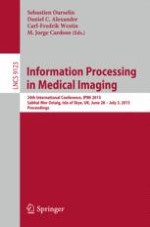2015 | OriginalPaper | Chapter
IMaGe: Iterative Multilevel Probabilistic Graphical Model for Detection and Segmentation of Multiple Sclerosis Lesions in Brain MRI
Authors : Nagesh Subbanna, Doina Precup, Douglas Arnold, Tal Arbel
Published in: Information Processing in Medical Imaging
Publisher: Springer International Publishing
Activate our intelligent search to find suitable subject content or patents.
Select sections of text to find matching patents with Artificial Intelligence. powered by
Select sections of text to find additional relevant content using AI-assisted search. powered by
